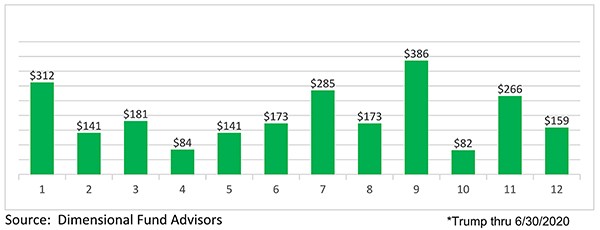How tired are we of the COVID virus and the ensuing lockdowns, employment loss, and total disruption of our way of life? Luckily, humans are very adaptable (Zoom, masks, six feet apart, online shopping), and the rollout of vaccines (though slow) gives us a glimmer of hope that the “end” is coming this year. We will certainly be a different country at some levels, but many of the problems from the past are still there and will surely resurrect as some level of normalcy returns.
As a Certified Divorce Financial Analyst, I tend to look at trends in divorce and found conflicting information on the surge or diminishment of divorce during the pandemic: New York Post: “Divorce rates skyrocket in U.S. amid COVID-19 pandemic”; Institute for Family Studies: “Divorce is down during COVID”; Web MD: “Pandemic Drives Couples to Divorce or to Seek Help”; Bloomberg.com: “Divorces and Marriages Tumbled in U.S. during COVID, Study Shows.”
 Ilia Burdun | Dreamstime.com
Ilia Burdun | Dreamstime.com
At first glance, it would seem that divorces would spike during such a stressful time, given that money (or lack of) is a top conflict behind many marriage dissolutions. However, as with the Great Recession in 2008/2009, it might be a money issue that actually keeps a couple tied together until a recession — or pandemic — ends. Additionally, the shutdown of courthouses and law offices this spring most surely slowed many in-progress filings, so I have to believe that any trends that emerged in 2020 might be short-lived.
If you are happily married, I congratulate you! You can finish reading this article and keep it in mind when you converse with friends who might not be so happy. If you are contemplating a separation or divorce, I wanted to give you some ideas on important topics you should consider as you work through this process.
Know about your money. Know what you have (assets), know what you earn (income), and know what you need (budget). If you don’t know anything about your money, you must learn. Get copies of bank account statements, 401ks, pension benefits, etc. and become familiar with them. This allows you to begin to understand the effects of a divorce prior to actually starting the process and helps put you in a position of strength for negotiation. Knowledge is key.
Hire experts to help you. A good family law attorney can advise you on the divorce process and potential issues that might arise. A good financial advisor (CDFA) can take your information and project success or pitfalls in your current or future living objectives. Knowledge is key.
Deciding to divorce should be the most emotional part of the process for you. Once you have made the choice to pull the trigger, remember to keep your emotions in check. Anger, fear, resentment, and hostility are all valid feelings, and I encourage you to work through these issues with a trusted friend or counselor. But if you let these feelings drive your process, you will be miserable and potentially make costly mistakes. Calm is key.
Protect your children and yourself at all costs. If you are in an abusive relationship or fear for your life, leave. If you are not, be watchful during the process to make sure it doesn’t become abusive. And whatever you do, never talk bad about the other spouse to the kids that you have with that spouse. No matter the age, children will feel some sense of responsibility to protect their love for that parent. This is a position you should never put them in. Love is key.
I hope that divorce isn’t in your future, but if it is, remember to be knowledgeable, calm and protective.
Kathy Williams, CFP, CDFA, is Principal and Senior Wealth Strategist at Waddell & Associates.

 Zimmytws | Dreamstime.comS
Zimmytws | Dreamstime.comS 